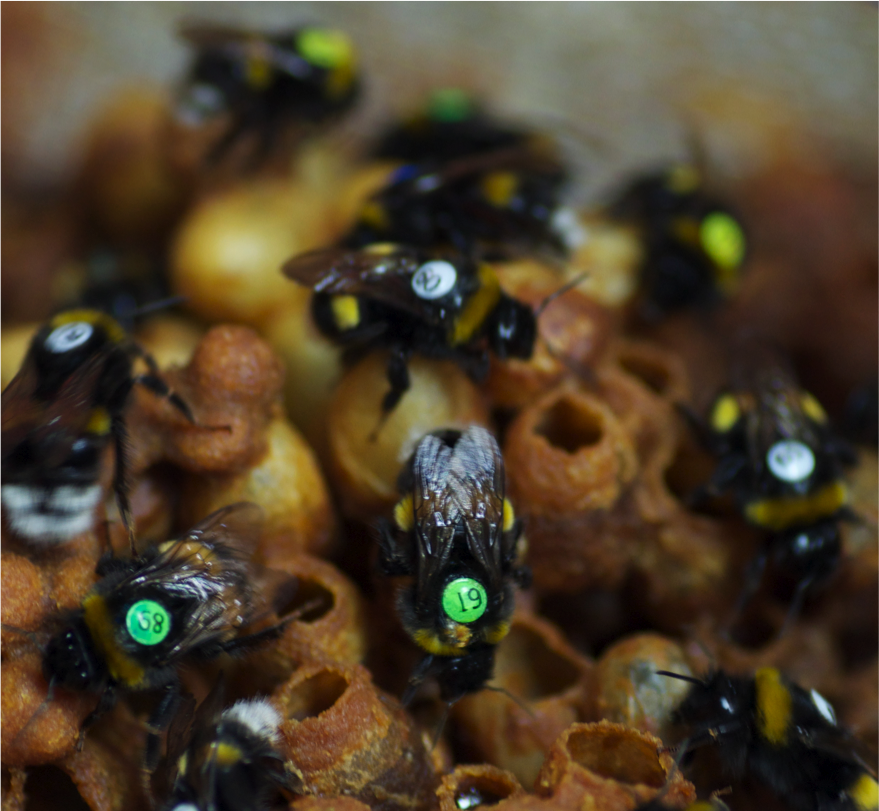Different parasite strains (of the same species of parasite) are able to infect different individuals (of the same species of host). This is called specificity or can be called a genotype-by-genotype interaction. That is, that some genotypes of parasite are able to infect some genotypes of hosts. In insects, it’s hard to understand how such specificity is generated since insects don’t have the adaptive immune system that is found in vertebrates, which is incredibly flexible, and components of which are known to produce such patterns. Insects have a comparatively modest but very functional immune system. The genes responsible for the recognition of parasites don’t tend to be vary variable (as they are in vertebrates) so it’s hard to see what could produce this pattern of specificity.
The European bumblebee Bombus terrestris is a model for this kind of specificity and we set out to try and understand how this specificity works. Based on some preliminary work it seemed that our bumblebees don’t differ much in candidate immune genes. But we know that different colonies (genotypes of bumblebees) have very different susceptibility to different genotypes of a common gut parasite (Crithidia bombi). In our paper which was just released in PNAS we look at how changes in gene expression might produce this pattern. Genes are turned on and off to achieve certain tasks, and how these genes are regulated, rather than differences in the genes themselves, could play a role in disease resistance.
We found that different parasite clones produced surprisingly different gene expression responses in the bumblebee hosts. We also found that different bumblebee colonies responded to parasite clones in different ways. These results suggest that differences in the way that bees respond to infection through the regulation of genes could also produce specificity without differences in the immune genes themselves. It is important to note that this doesn’t mean that the differences aren’t genetic, but rather that the genetic differences are coded at places other than the immune genes that deal with infection. So, for instance, there might be variation in regulatory genes rather than in antimicrobial peptides which play a major role in fighting infection.
We also found an unexpected result in our data. We found that the parasite clones that were really good at infecting bumblebees produced a different response to the parasite clone that wasn’t very good at infecting. The ‘bad’ parasite clone turned on a lot of what we’d think of as the normal immune response. The ‘good’ parasite clones didn’t. In fact, the infectious parasite clones seem to actively turn off the immune response. Parasites can manipulate all sorts of host responses from complex behaviors, to sleep patterns, and to the functioning of the immune system itself. In this case, it seems that some parasite clones are better able to control the immune system of their hosts, and some hosts are better able to resist this manipulation than others.
///// click below for full text of the paper /////

